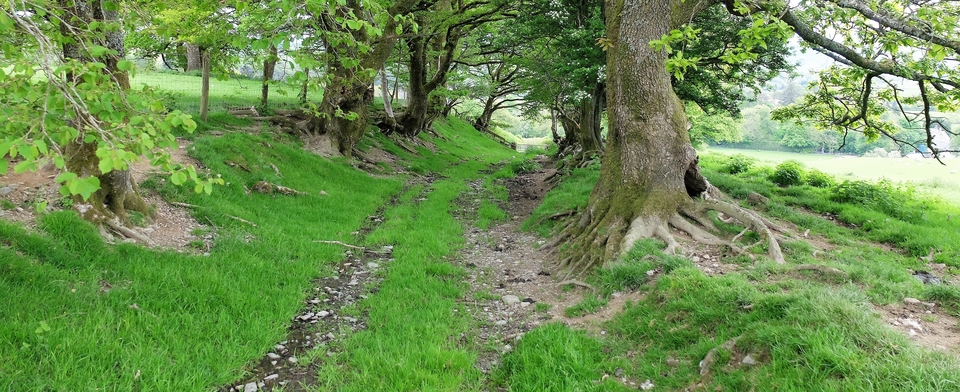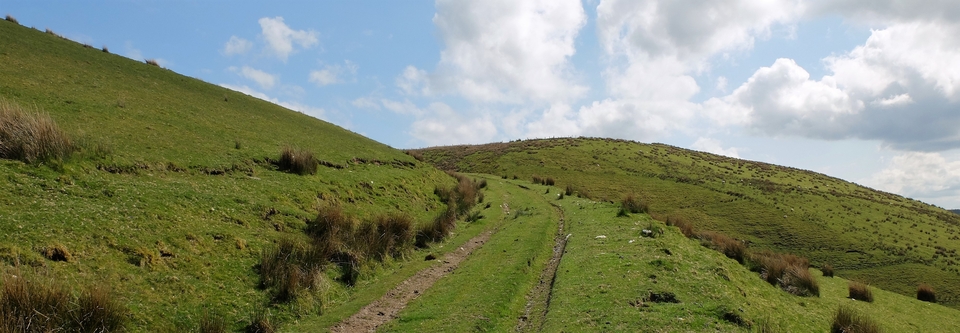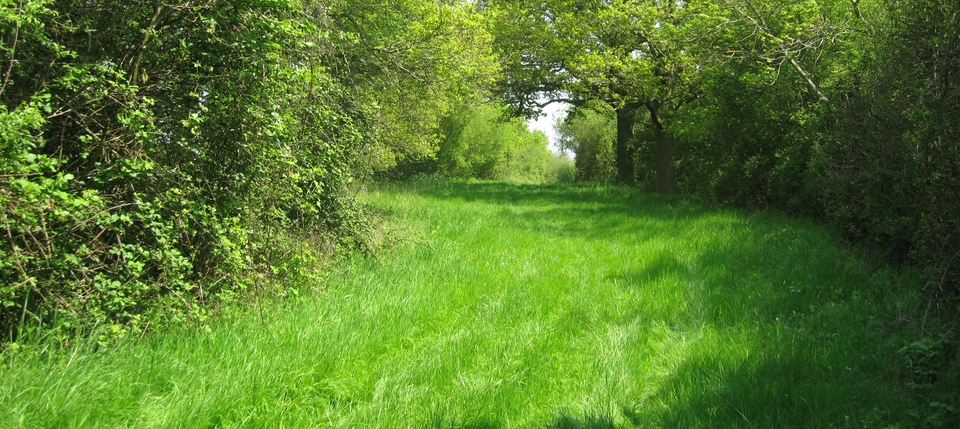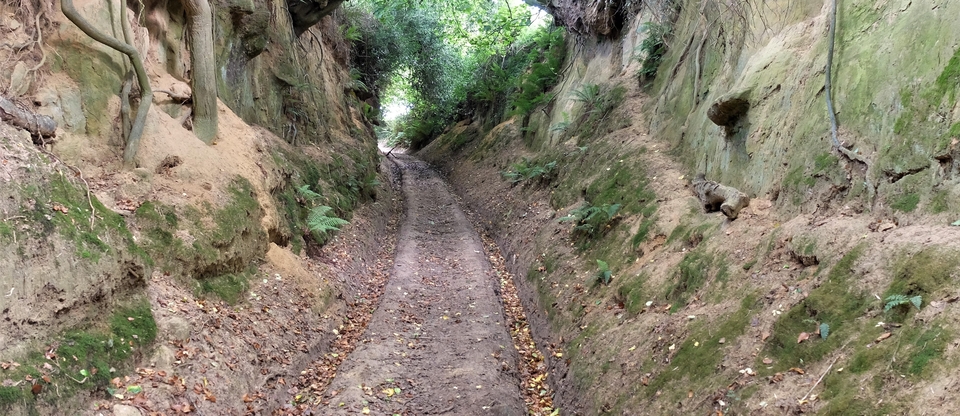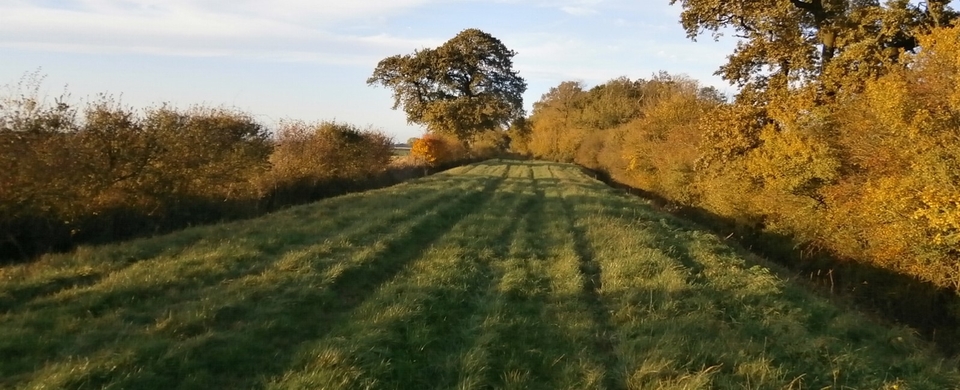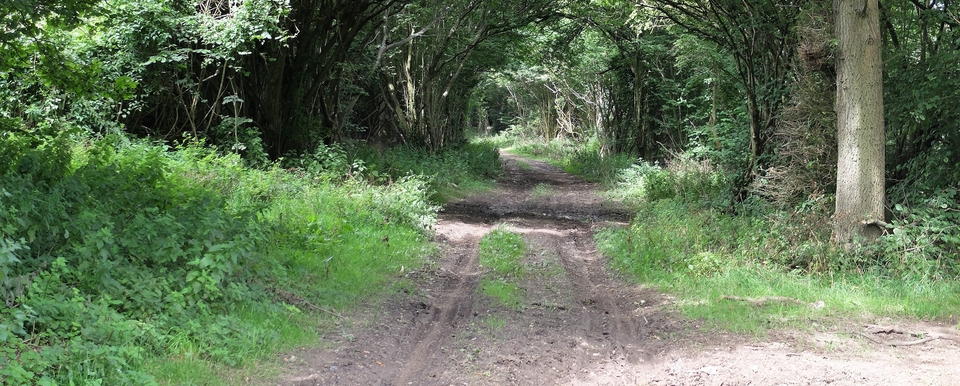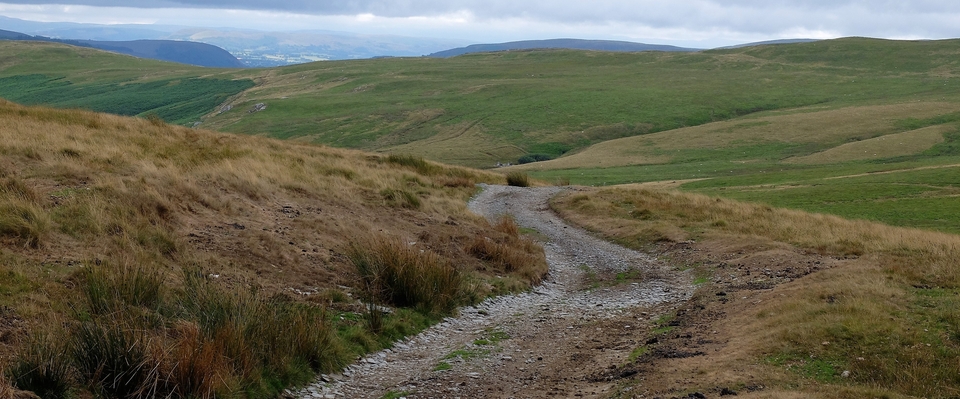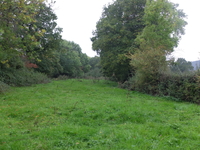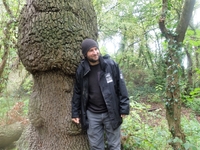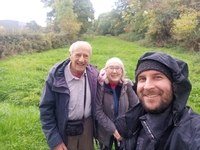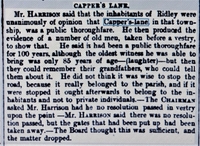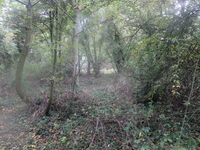Capper's Lane, Wrexham
Wrexham Industrial Estate, one of the largest in Europe, sits on the land used by a wartime cordite factory. It provides over 10,000 jobs and includes HMP Berwyn, one of the largest prisons in the UK.
Next door to it, on the east side, is Capper’s Lane (#1). Only half a mile long, if that, but lined with ancient oak trees and home to seven species of bat, Great crested newt, Barn owl, the rare Grizzled Skipper butterfly. And fighting a war to preserve it from encroachment by industry is Jonny Hulson of the North Wales Wildlife Trust (NWWT). When we first met him at the entrance to Capper’s Lane (SJ 397506), near Marshley Farm Isycoed, he said he had put nearly six years of his life into protecting the lane. In 2016, he and the local Ramblers Group submitted a Definitive Map Modification Order to Wrexham County Borough Council to have the old lane adopted as a public footpath. Six years later, the case will be decided by Welsh Government planners at a public hearing in 2023.
The fact that the narrow tract of land is split between two owners: a farmer (supportive of NWWT’s claim) and an opposing developer who wishes to build an internal access road that would bisect the only remaining section of this ancient highway, once the most important thoroughfare for drovers into Wrexham Beast Market after crossing the River Dee from England. Wildlife corridors like Capper’s Lane are important because of their diversity of old trees, grasslands and wetlands, irreplaceable habitats that many species feed, breed and seek refuge in.
NWWT operate a ‘Living Landscape’ scheme on Wrexham Industrial Estate, which is about involving businesses on the estate in positive measures for biodiversity, so that development can proceed in a more joined-up way, maintaining wildlife corridors and creating a greener, healthier and more natural place for people to live and work. Wrexham Industrial Estate is surrounded by rural villages, which are all affected by the traffic, light, noise and smells of the industrial estate, and it’s no surprise that the area is a wildlife hotspot because it largely avoided pesticides and agricultural improvement due to its enclosure as a Royal Ordnance Factory in World War 2 and later acquired by the Welsh Development Agency to attract large industry. In the summer the road verges are alive with wildflowers and butterflies, and fragments of ancient woodland with bluebells and wood anemones are sandwiched between large factory buildings.
A depressing number of old ways like Capper’s Lane have been lost over the past few decades and Jonny believes it is imperative that local authority planners start to recognise their crucial role as wildlife corridors in a landscape of fragmented and deteriorating habitats. Drovers roads like Capper’s Lane represent our local heritage and give people the opportunity to walk in their ancestor’s footsteps, and they should always be safeguarded for future generations to enjoy.
It's a beautiful lane and definitely a drover’s track: what looks like an old pond lies inside; two ox-shoes were discovered when a couple of small trenches were dug in 2017 by Wrexham Council and the Council for British Archaeology Wales.. On the other side of the B5130 is a Halfpenny Field, according to the tithe map of 1839 – this was often used to mean drovers would be charged half a penny for each beast overnight. Also, just the other side of the road, is a “slang”, or thin field belonging to the old pub that is now the Nags Head.
Well done and Good Luck, Jonny.
